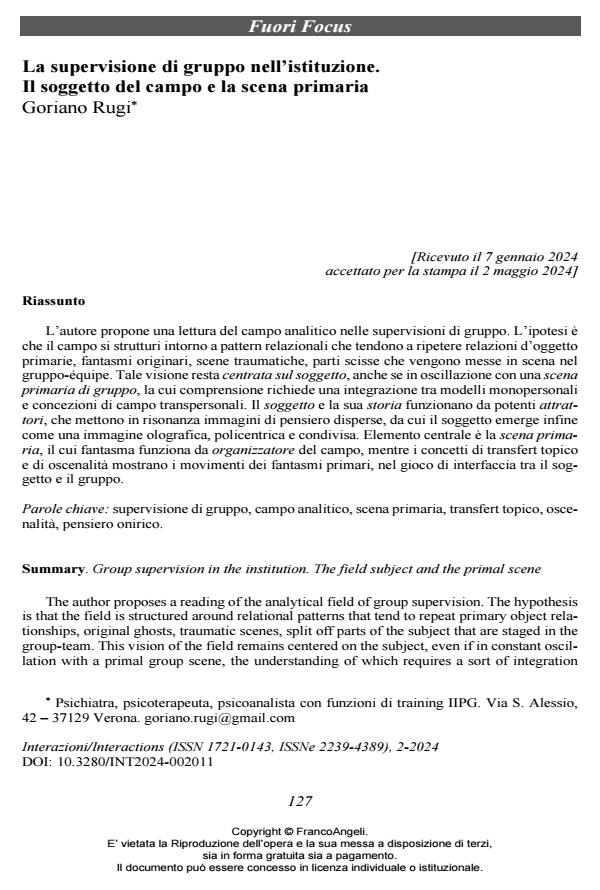Group supervision in the institution. The field subject and the primal scene
Journal title INTERAZIONI
Author/s Goriano Rugi
Publishing Year 2024 Issue 2024/2
Language Italian Pages 17 P. 127-143 File size 200 KB
DOI 10.3280/INT2024-002011
DOI is like a bar code for intellectual property: to have more infomation
click here
Below, you can see the article first page
If you want to buy this article in PDF format, you can do it, following the instructions to buy download credits

FrancoAngeli is member of Publishers International Linking Association, Inc (PILA), a not-for-profit association which run the CrossRef service enabling links to and from online scholarly content.
The author proposes a reading of the analytical field of group supervision. The hypothesis is that the field is structured around relational patterns that tend to repeat primary object rela-tionships, original ghosts, traumatic scenes, split off parts of the subject that are staged in the group-team. This vision of the field remains centered on the subject, even if in constant oscilla-tion with a primal group scene, the understanding of which requires a sort of integration be-tween single-person models and transpersonal conceptions of the field. The subject and its history function as powerful attractors, capable of putting distant and dispersed images of thought into resonance, organizing them in a common psychic field, from which the subject finally emerges as a holographic, polycentric and shared image. The central element is the pri-mal scene, whose ghost functions as an organizer of the emotional field, while the concepts of topical transference and obscenity show the movements of the primary ghosts, in the interplay between the subject and the group. The internal, split group nature of the subject enters into resonance with the external one of the operators, whereby each member is captured in com-mon behaviors and fantasies, connected to those of the patient. Group work allows us to “dream together” of the split and unconscious aspects, which can be integrated, or in any case accepted in their difference and polarity as non-integrable opposites, at least in the here and now.
Keywords: group supervision, analytic field, primal scene, topical transference, obscenality, dreaming thinking.
Goriano Rugi, La supervisione di gruppo nell’istituzione. Il soggetto del campo e la scena primaria in "INTERAZIONI" 2/2024, pp 127-143, DOI: 10.3280/INT2024-002011